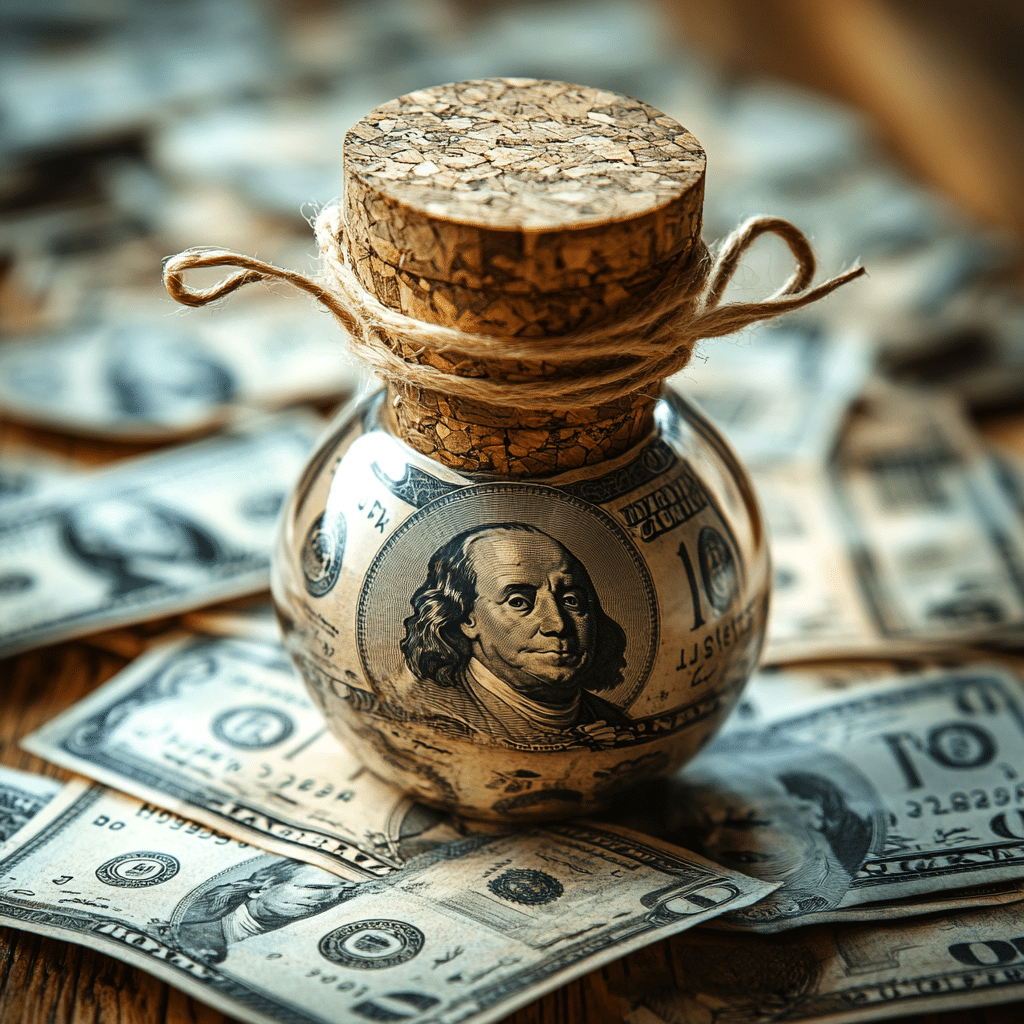Is APR and Interest Rate the Same Question Explained
When you’re digging into loans, mortgages, and all those financing options out there, you’re bound to run into terms like APR and interest rate. A common misconception is that they are the same. However, understanding the distinct differences between APR and interest rate is essential for making sound financial choices. This guide will unravel these key differences, show you their impact, and tackle some common questions surrounding them.

What is APR and is APR the Same as Interest Rate?
Annual Percentage Rate (APR)
APR stands for Annual Percentage Rate, and it reflects the yearly cost of borrowing money. It includes the interest rate plus other fees, providing a more comprehensive insight into what your mortgage or loan will cost over time. Think of it as a well-rounded viewpoint encompassing the entire borrowing expense.
Interest Rate
The interest rate, on the other hand, is just the percentage of the loan amount that you are charged for borrowing the money. This does not factor in any additional costs or fees. It’s straightforward and keeps things simple but might miss some hidden charges.
Distinct Differences
- Inclusion of Fees: APR bundles in various fees (like origination fees, mortgage insurance, and administrative costs) while the interest rate doesn’t.
- Cost Representation: APR offers a fuller picture of the annual cost of borrowing.
- Complexity in Calculations: APR calculations are intricate due to fee inclusions, whereas interest rate calculations are more straightforward.
Understanding these differences can greatly influence your loan or mortgage choices, steering you clear of unexpected expenses.

How Does a Loan Recast Decrease Interest Rate?
Understanding Loan Recasting
Loan recasting, also known as re-amortization, involves making a significant payment on the principal loan amount, allowing borrowers to lower their monthly payments without altering their interest rate. The remaining balance is amortized over the existing loan term.
- Decrease in Interest Paid: Although the interest rate remains uniform, the amount of interest paid decreases over time because the principal has been significantly reduced.
- Real-Life Example: For instance, Bob, a homeowner, comes into a hefty inheritance. He uses it to make a lump-sum payment on his mortgage. This action drops his principal significantly, reducing his future monthly payments while keeping his interest rate unchanged.
Benefits
- Lower Monthly Payments: With a reduced principal, the monthly payments go down.
- Reduced Interest Over Time: The total interest paid over the life of the loan decreases.
For more details on recasting and interest rates, check out our detailed guide here.
| Criteria | APR (Annual Percentage Rate) | Interest Rate |
| Definition | A broader measure of the cost of borrowing that includes the interest rate plus other fees. | The cost of borrowing expressed as a yearly percentage of the loan amount, excluding fees. |
| Components | Interest rate, lender fees, mortgage insurance, discount points, and other charges. | Only the interest cost of borrowing the principal loan amount. |
| Representation | Expressed as a yearly percentage. | Expressed as a yearly percentage. |
| Inclusion of Fees | Yes, includes most fees and costs associated with the mortgage. | No, excludes fees and other costs. |
| Purpose | To provide a more complete picture of the total cost of borrowing. | To show the interest charged annually on the loan amount. |
| Impact on Monthly Payment | No direct impact; includes costs that might be paid upfront or monthly. | Direct impact on monthly mortgage payments. |
| Use in Comparison | More accurate for comparing different loan offers. | Useful for understanding the cost of borrowing money. |
| Borrower’s Cash Flow | Accounts for fees and extra costs influencing the borrower’s cash flow over time. | Only reflects the interest cost, hence simpler but less comprehensive view. |
| Regulation | Required to be disclosed by lenders to provide true cost of borrowing. | Standard part of loan offers, mandatory disclosure. |
Strategies on How to Buy Down Interest Rate
Buying Down the Rate
Buying down your mortgage rate involves purchasing discount points to lower the interest rate before finalizing your loan. Each discount point usually costs 1% of your loan amount and can reduce your rate by roughly 0.25%.
- Calculator for Analysis: Platforms like NerdWallet offer calculators to help analyze potential savings.
- Example: Take Sarah, who desires a lower interest rate on her $100,000 mortgage. She shells out $3,000 for 3 discount points, lowering her interest rate from 4% to 3.25%. Over time, she saves significantly on interest payments.
Factors to Consider
- Upfront Cost: Can you handle the initial expense?
- Long-Term Savings: Does the overall interest reduction justify the initial cost?
- Loan Duration: More beneficial for long-term loans rather than short-term ones.
Wondering more about mortgage rates and how they might evolve? See our insights here.
Is APR the Same as Interest Rate in Credit Products?
Credit products, like credit cards, utilize both APR and interest rates to indicate borrowing costs, but apply them differently.
In Credit Cards
- Interest Rate: Often called the Nominal APR, this is the interest charged on the outstanding balance.
- APR: This rate includes additional fees such as annual fees, late fees, and balance transfer fees.
Example
Consider the Chase Sapphire Preferred Card, which offers a variable interest rate starting at 16.24%. When you factor in various fees and potential penalties, the APR can be higher, providing a clearer picture of the total borrowing cost.
Understanding Higher APR vs Lower Interest Rate: The Real Impact
A higher APR typically means your loan comes with more fees, reflecting a higher overall cost of borrowing. Conversely, a lower interest rate without significant fees can sometimes be cheaper, even if its nominal rate is higher.
Real Estate Scenario
For example, a mortgage from a big-name lender like Wells Fargo might offer a 3.5% interest rate with a 3.8% APR. This could be cheaper over the loan term compared to a no-fee mortgage at a 3.6% interest rate due to fewer additional costs.
Innovative Wrap-Up
Stepping through financial jargon can seem tricky, but grasping concepts like APR and interest rates puts you in the driver’s seat of your financial decisions. Recognizing their differences and how they play out in your loans, mortgages, and credit products equips you to make smart choices. Whether you’re considering a loan recast, buying down your interest rate, or comparing credit card offers, this knowledge will help you navigate the financing terrain confidently.
For those keen on diving deeper or exploring mortgage options, visit Mortgage Rater for personalized advice and current offerings—your go-to source for detailed mortgage insights!
Is APR And Interest Rate The Same? Understanding The Difference
Fun Trivia: Financial Facts You Didn’t Know
Is APR and interest rate the same? Well, to spice things up, let’s jump into some intriguing trivia. Did you know the concept of APR, or Annual Percentage Rate, originated from the Consumer Credit Protection Act of 1968? It’s true! This act was introduced to maintain transparency in lending practices, making it easier for borrowers to understand who has the lowest home interest rate.(
Interesting Tidbits about Home Prices and More
Here’s a fun fact: the average percent houses go up in price every decade( is roughly around 5-6%. So, while you’re wondering “is APR and interest rate the same,” keep in mind that home equity tends to grow, making your mortgage investment more valuable over time.
Quirky Facts with a Financial Twist
On a lighter note—ever thought about how to calculate your financial standing amidst all this mortgage talk? Well, understanding how to calculate your debt to income ratio( can be just as crucial as knowing your APR from your interest rate. It’s an essential metric lenders use to determine your eligibility for loans.
And in a strange twist, did you know that the beloved horror manga artist Junji Ito, famous for his work on Junji Ito cat, once dabbled in finance? No, not really, but wouldn’t that be a spooky yet amusing crossover?
As you see, interest rates and APRs may seem dry and daunting, but there’s always a way to make them exciting and relatable. Whether it’s through historical facts, financial statistics, or quirky trivia, the key is to understand the bigger picture of your mortgage world. Now, go ahead and impress a friend with your new knowledge or just revel in these fun facts!




